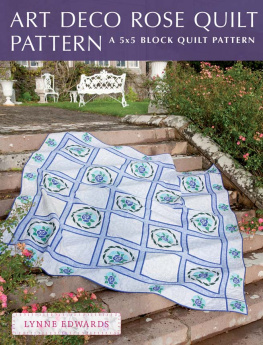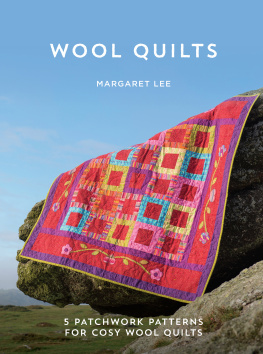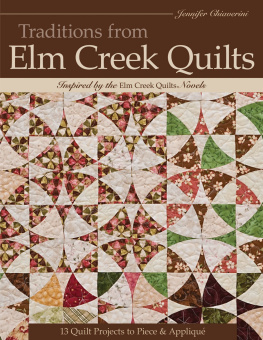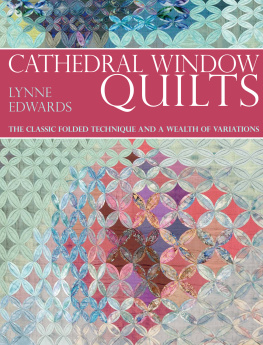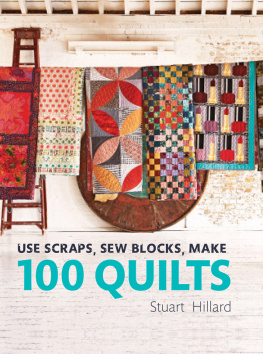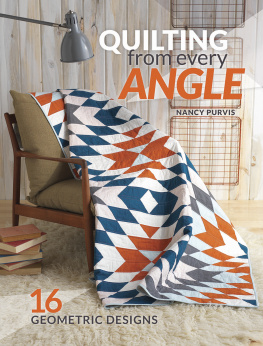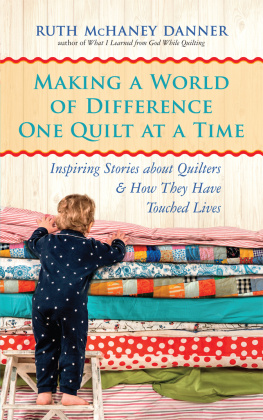Love of
QUILTS
A Treasury of Classic Quilting Stories
Compiled by Cuesta Ray Benberry and Carol Pinney Crabb
Time line by Cuesta Ray Benberry

Dedication
This book is dedicated to Bill Crabb whose generous assistance and active participation enabled us to reach our goal.
Acknowledgments
We gratefully acknowledge those publishers who granted permissions to include the short stories in this quilt fiction anthology.
Some of the original sources for the stories were: Hearst Magazines, Inc., New York, Good Housekeeping Magazine, Blazing Star by MacKinlay Kantor and Missouri Rose by Martha Cheavens; Crowell Publishing, New York, Womans Home Companion, The Orange Quilt by Della T. Lutes and The Horoscope by Eliza Calvert Hall; The Home Circle, What Lettys Quilt Told by Bessie Barber; The Youths Companion, The Quilt-of-the-Cloth-of Gold by Anne McQueen, The Ashley Star by Marjorie Hill Allee, The Rose and Lily Quilt by Elsie Singmaster, and Mrs. Hannah by F. Roney Weir; Argosy, Quilt Scraps by Louise Platt Hauck; Ladies Home Journal, The Best Housekeeper in Banbury by Edith Robinson; Harpers Monthly Magazine, The Bedquilt by Dorothy Canfield.
We appreciate the generosity of Virginia Gunn, Dorothy Cozart, Shirley McElderry, and the late Sally Garoutte, who sent us quilt stories to add to our cache.
For typing our entire introduction, time line, and bibliography on floppy discs and acting as advisor, Bill Crabb has earned our eternal thanks.
Our editor, Victoria Faoro, maintained an ideal mixture of professionalism and patience with this long distance, three-city operation, and we admire her very much.
To our families who have endured the entire project with good humor, your funny remarks were true stress relievers, and we thank you.
CONTENTS
By Cuesta Ray Benberry and Carol
Pinney Crabb
By Harriet Farley or Rebecca C. Thompson, The Lowell Offering: Writings by New England Mill Women (18401845), Vol. V, pp. 201-203, 1845. Edited with an introduction and commentary by Benita Eisler, 1977 Benita Eisler, J. B. Lippincott Company, Philadelphia and New York
By Miss C. M. Sedgwick, The Columbian Ladys and Gentlemans Magazine, Vol. V, March 1846
By T. S. Arthur, Godeys Ladys Book and Magazine, September 1849
By Josiah Allens Wife, Godeys Ladys Book, July 1868
From The Shadow of Moloch Mountain by Mrs. Jane G. Austin, Chapters 7, Busy Bees; 8, Stinging Bees; and 9, Feeding the Bees, featured in Hearth and Home, Chapters 7 and 8, August 27, 1870 and Chapter 9, September 3, 1870
Anonymous, Harpers Bazar, March 5, 1870
By Josiah Allens Wife, Petersons Magazine, September 1872
By Annie E. S. Beard, Pictorial War Record, 1883 (reprinted from The Soldiers Bulletin)
By Dulcie Weir, Godeys Ladys Book, July 1884
By Mary E. Wilkins, Harpers New Monthly Magazine, Vol. LXIX, June to November 1884
By L. E. Chittenden, Petersons Magazine, December 1885
By Elias Nason, A.M., Granite Monthly, Vol. 3-3-D, 1885
By Sydney Dayre, Harpers Young People, Vol. VII, June 15, 1886
By Adelaide D. Rollston, Harpers Bazar, August 24, 1889
By Antonia J. Stemple, Good Housekeeping, March 1898
By Mrs. O. W. Scott, The Youths Companion, September 22, 1898
By Edith Robinson, Ladies Home Journal, June 1905
By Dorothy Canfield, Harpers Monthly Magazine, Volume CXIII, June 1906 to November 1906
By F. Roney Weir, The Youths Companion, June 13, 1912
By Elsie Singmaster, The Youths Companion, October 2, 1913
By Louise Platt Hauck, Argosy, Volume CXIX, Number 4, April 10, 1920
By Marjorie Hill Allee, The Youths Companion, April 7, 1921
By Eliza Calvert Hall, Womans Home Companion, January 1922
By Annie McQueen, The Youths Companion, December 11, 1924
By Bessie M. Barker, The Home Circle, June 1938
By Martha Cheavens, Good Housekeeping, July 1939. 1939 by Hearst Magazines, Inc. Copyright renewed 1967 by Martha Cheavens. Reprinted by permission of Harold Ober Associates Incorporated.
By MacKinlay Kantor, Good Housekeeping, September 1940. Reprinted by permission of Tim Kantor and Layne Kantor Shroder, children of deceased author.
By Delia T. Lutes, Womans Home Companion, October 1940
INTRODUCTION
From the mid nineteenth century to the early twentieth century short stories about quilts reflected social awareness and concerns, served as moral guidance for young girls, defined the tastes in needlework of the time or the fads of the moment. They revealed regional differences in taste in quilts and differences in customs. The stories disclosed the popular perceptions of quilts in the nineteenth century and in a larger sense, popular attitudes toward the persons who made the quilts. Frequently, there were both subtle and overt distinctions of class in the portrayal of quiltmakers.
The common thread running through this collection of short stories is the humble bed quilt.
Plays, songs, poems, and a myriad of short stories have been written about the patchwork quilt. No other handmade textile has been the cause of so much inspiration. Woven coverlets, blankets or crochet work have not aroused the musician or author to sing their praises or to weave a story around them. Those textile skills are single-handed projects; solo performances. There is not the interaction with friends or neighbors in weaving that there is in making quilts.
One person can make a quilt from start to finish, or as many as fifteen or twenty people can be involved. Friendship quilts have the greatest number of participants as each block is made by a different person. When the quilt top is ready to be quilted the maker can quilt it alone, or she may choose to ask others to help.
Settings
The authors of these short stories usually did not locate the stories in a particular town, city or state. Some locations, however, are mentioned in a general way, such as The South, The Deep South, and Texas. One story was set in Boston. In another story an old mother left her small town to take a long trip by train into New York City to deliver a quilt to her son and his new wife. The literary ladies of New England, Mary E. Wilkins, Harriet Beecher Stowe, Dorothy Canfield, and Louisa May Alcott, as might be expected, placed their stories in small New England towns most familiar to them. Locations of the rest of the stories are left to the readers imagination.
Occasionally a man ventured into the female-dominated field of quilt fiction. A Methodist Bishop, John Heyl Vincent, wrote of a quilt that had a story to tell. T. S. Arthur, a publisher, tried his hand at quilt fiction when he wrote The Quilting Party for Godeys Ladys Book.
Crazy Quilts
A phenomenon in the quilt world was the crazy quilt, as it excited the interest of writers more than any other kind of quilt. In this collection are pieces of fiction employing the crazy quilt as a theme. The crazy quilt sky-rocketed to fame in the early 1880s and gradually disappeared by the turn of the century. Most of the crazy quilt stories were written during their ascendancy in popularity, 1882 to 1890.


